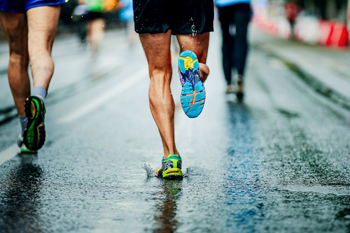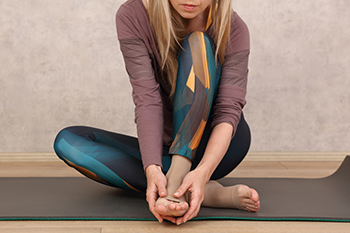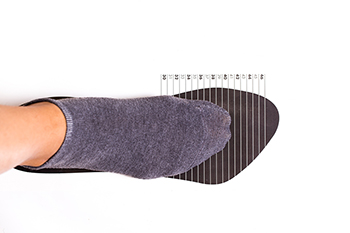Items filtered by date: March 2023
Drinking Water and Stretching May Help to Prevent Running Injuries

Preventing injuries to the feet is an important part of the running routine. Avid runners often know the importance of tracking their shoes’ mileage, and many will have at least two pairs. The average running shoe is replaced between 300 and 500 miles and may vary with individual gaits, or running styles. It is beneficial to properly warm up and cool down before and after running. Dynamic stretching, consisting of side shuffles, walking, and lunges are done before running, and static stretches can be done after the run. These are stretches that target the glutes, calves, and hamstrings and are beneficial in keeping the body loose. Muscle cramps may be prevented by drinking plenty of water before, during, and after running. On the days when the body is resting from running, many people choose to add a full-body workout, which is an effective way of building muscular endurance. If you would like additional information about how running injuries can affect the feet and how to prevent them, it is suggested that you confer with a podiatrist.
Exercising your feet regularly with the proper foot wear is a great way to prevent injuries. If you have any concerns about your feet, contact Jon McCreary, DPM of Fort Worth Podiatry. Our doctor will treat your foot and ankle needs.
How to Prevent Running Injuries
Many common running injuries are caused by overuse and overtraining. When the back of the kneecap starts wearing out and starts causing pain in your knee, this is commonly referred to as runner’s knee. Runner’s knee is a decrease in strength in your quadriceps and can occur if you’re not wearing properly fitted or supporting shoes. To prevent runner’s knee, focusing on hip strengthening is a good idea, as well as strengthening your quads to keep the kneecaps aligned.
What Are Some Causes of Running Injuries?
- One cause of a common running injury is called iliotibial band syndrome.
- Plantar fasciitis is also another common injury.
- Stress fractures can occur from overtraining, lack of calcium, or even your running style.
Best Ways to Prevent Running Injuries
- Wear footwear that fits properly and suits your running needs.
- Running shoes are the only protective gear that runners have to safeguard them from injury.
- Make a training schedule. Adding strengthening exercises as well as regular stretching can help keep you strong and limber and can lessen the possibility of injuries.
- Stretching keeps muscles limber; this will help you gain better flexibility.
If you have any questions please feel free to contact our office located in Fort Worth, TX . We offer the newest diagnostic and treatment technologies for all your foot and ankle needs.
What Can Cause Poor Circulation?

Poor circulation often affects the feet. Patients who have this condition may notice a tingling or numbing sensation in different parts of the foot, and the ankles may be swollen. It may be caused by high blood pressure, diabetes, or poor digestion. Additionally, as people age, they may become more sedentary than in prior years, causing less blood to pump through the body. When the circulatory system works well, oxygen and nutrients are sent to all areas of the body, and poor circulation may cause a lack of proper blood flow. People who have poor circulation may notice there is less hair on their legs, and their feet may feel cold. Patients may notice mild improvement when they begin a gentle exercise routine, such as swimming or walking. It is beneficial to start slowly, and gradually increase the activity level as the body becomes accustomed to moving. If you have poor circulation, it is suggested that you schedule an appointment with a podiatrist who can provide you with additional relief options, and determine what the best treatment is for you.
While poor circulation itself isn’t a condition; it is a symptom of another underlying health condition you may have. If you have any concerns with poor circulation in your feet contact Jon McCreary, DPM of Fort Worth Podiatry. Our doctor will treat your foot and ankle needs.
Poor Circulation in the Feet
Peripheral artery disease (PAD) can potentially lead to poor circulation in the lower extremities. PAD is a condition that causes the blood vessels and arteries to narrow. In a linked condition called atherosclerosis, the arteries stiffen up due to a buildup of plaque in the arteries and blood vessels. These two conditions can cause a decrease in the amount of blood that flows to your extremities, therefore resulting in pain.
Symptoms
Some of the most common symptoms of poor circulation are:
- Numbness
- Tingling
- Throbbing or stinging pain in limbs
- Pain
- Muscle Cramps
Treatment for poor circulation often depends on the underlying condition that causes it. Methods for treatment may include insulin for diabetes, special exercise programs, surgery for varicose veins, or compression socks for swollen legs.
As always, see a podiatrist as he or she will assist in finding a regimen that suits you. A podiatrist can also prescribe you any needed medication.
If you have any questions, please feel free to contact our office located in Fort Worth, TX . We offer the newest diagnostic and treatment technologies for all your foot care needs.
Moccasin-Type Athlete’s Foot

Athlete’s foot is a particular kind of fungal infection that impacts the feet. Individuals who have athlete’s foot may experience different symptoms. For example, patients may present a scaly rash that could be red. There are several different types of athlete’s foot that an individual could have. Moccasin-type athlete’s foot is one such type. Several things characterize this kind of athlete’s foot. Namely, moccasin-type athlete’s foot affects the soles of the feet, the heel, and the edges of the foot. As a result of having a moccasin-type athlete’s foot, an individual could experience soreness in the feet. The skin on the feet may even thicken in texture or crack. If you are struggling with athlete’s foot, it is suggested that you consult with a podiatrist today.
Athlete’s foot is an inconvenient condition that can be easily reduced with the proper treatment. If you have any concerns about your feet and ankles, contact Jon McCreary, DPM from Fort Worth Podiatry. Our doctor will treat your foot and ankle needs.
Athlete’s Foot: The Sole Story
Athlete's foot, also known as tinea pedis, can be an extremely contagious foot infection. It is commonly contracted in public changing areas and bathrooms, dormitory style living quarters, around locker rooms and public swimming pools, or anywhere your feet often come into contact with other people.
Solutions to Combat Athlete’s Foot
- Hydrate your feet by using lotion
- Exfoliate
- Buff off nails
- Use of anti-fungal products
- Examine your feet and visit your doctor if any suspicious blisters or cuts develop
Athlete’s foot can cause many irritating symptoms such as dry and flaking skin, itching, and redness. Some more severe symptoms can include bleeding and cracked skin, intense itching and burning, and even pain when walking. In the worst cases, Athlete’s foot can cause blistering as well. Speak to your podiatrist for a better understanding of the different causes of Athlete’s foot, as well as help in determining which treatment options are best for you.
If you have any questions please feel free to contact our office located in Fort Worth, TX . We offer the newest diagnostic and treatment technologies for all your foot and ankle needs.
Gout Pain Can Be Managed
Helpful Tips When Buying Shoes

The feet are often taken for granted, and this includes choosing shoes that fit correctly. It is crucial that shoes are comfortable as they are tried on, and a break-in period is generally frowned upon. Many foot conditions occur as a result of wearing shoes that are too tight, often affecting the toes. These can include Morton’s neuroma, bunions, and corns. Relief is often found when shoes that are worn fit properly, and the conditions may gradually diminish. There are helpful tips when purchasing new shoes, including trying them on at the end of the day when the feet are at their largest. Many people think their feet are one size, however, all shoes are not constructed equally, and the size may vary slightly. Trying shoes and walking in them will help you to determine if the shoe is right for you. This can help to provide an easy fit, and blisters and calluses may be avoided. If you would like more information about how to choose the right shoe size, it is suggested that you speak with a podiatrist who can answer any questions you may have.
Getting the right shoe size is an important part of proper foot health. Seek the assistance of Jon McCreary, DPM from Fort Worth Podiatry. Our doctor will provide the care you need to keep you pain-free and on your feet.
Getting the Right Shoe Size
There are many people who wear shoes that are the incorrect size, negatively affecting their feet and posture. Selecting the right shoes is not a difficult process, so long as you keep several things in mind when it comes to choosing the right pair.
- When visiting the shoe store, use the tools available to measure your foot.
- Be sure there is ‘wiggle room’. There should be about an inch between your toes and the tip of your shoes.
- Do not always assume you are the same size, as manufacturers run differently.
- Purchase shoes later in the day, as your feet swell as the day progresses.
- If a shoe is not comfortable, it is not suitable. Most shoes can’t be ‘broken in’, and comfort should be the ultimate goal when it comes to choosing the right pair of shoes
As our feet hold our body weight and keep us moving, it is important to treat them right. Picking the right pair of shoes can provide your feet comfort and mobility without pain.
If you have any questions, please feel free to contact our office located in Fort Worth, TX . We offer the newest diagnostic and treatment technologies for all your foot care needs.

